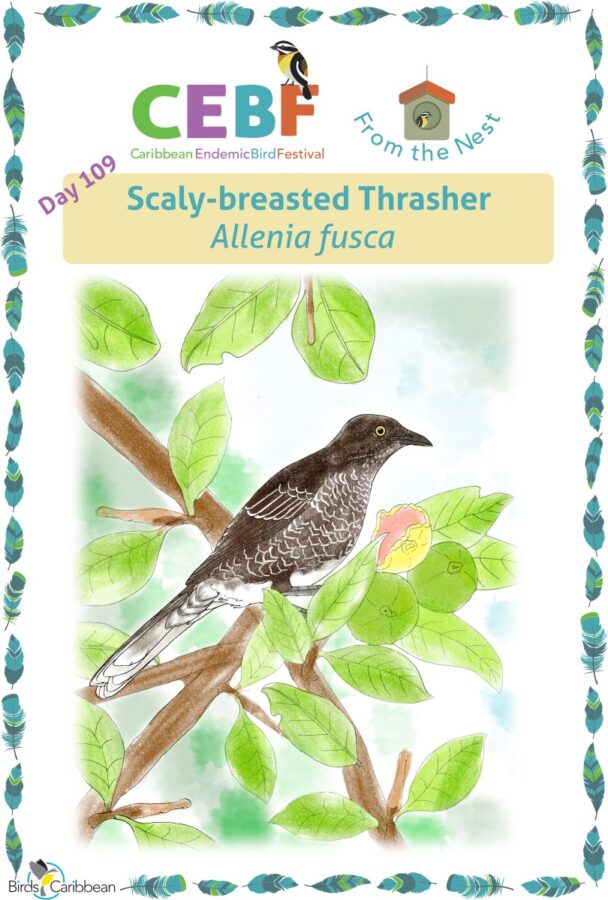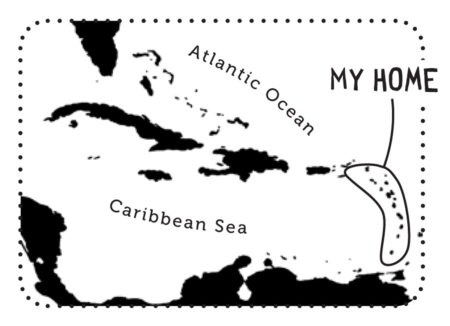Celebrate the Caribbean Endemic Bird Festival (CEBF) with us! Our theme in 2023 is “Water: Sustaining Bird Life,” highlighting the importance of water conservation to both humans and birds. Have fun learning about a new endemic bird every day. We have colouring pages, puzzles, activities, and more. Download for free and enjoy nature with your family at home.
Endemic Bird of the Day: Scaly-breasted Thrasher
Some birders have a really hard time trying to find today’s bird, especially novice birders! The Scaly-breasted Thrasher is built like a thrush and looks a lot like it’s cousins, the Spectacled Thrush and Pearly-eyed Thrasher. This handsome bird belongs to the family “Mimidae” – which includes mockingbirds and thrashers.
Scaly-breasted Thashers might be considered by some to be a bit on the drab side. They have a dark gray-brown head, tail, and upper parts. This lack of “field marks” could put even an experienced birder in a frenzy. But look closely and you will see the scaly breast that give this bird its name really stands out, distinguishing it from other similar species! Scaly-breasted Thrashers also have a short dark bill, thin white wing bars, a hint of scarlet on the rump, and a yellow iris.
These thrashers can be found in the Lesser Antilles, from Anguilla all the way down to Grenada. They use a wide variety of habitats, from mangroves and coastal scrub to semi-open woodlands and humid forests. Scaly-breasted Thrashers are also commonly seen in and around human habitations on some islands. They love to forage high in the canopy in Dominica and Guadeloupe, but will be seen feeding much lower in Montserrat and St. Kitts.
These birds are not fussy and eat a wide variety of foods, including insects, fruits and berries, although they are thought to favour fruits. Their breeding season is in May to June, when they raise 2 to 3 chicks.
Scaly-breasted Thrashers sound similar to mockingbirds, but their voice is softer and slower…be sure to take a listen to for their beautiful warbling song. And listen out for the “dew-quip!” given often when foraging.
Scaly-breasted Thrashers are listed as “Least Concern” by the IUCN, but with habitat loss and land-use change they could become less common in the future. For example, birders in Grenada already find it hard to spot Scaly-breasted Thrashers. There is still a lot to learn about this Caribbean endemic and it’s important to make sure we protect its habitats to ensure its future is secure. Learn more about this species, including its range, photos, and calls here.
Thanks to Quincy Augustine for the text!
Colour in the Scaly-breasted Thrasher
Download our West Indies Endemic Bird colouring page. Use the photos below as your guide, or you can look up pictures of the bird online or in a bird field guide if you have one. Share your coloured-in page with us by posting it online and tagging us @BirdsCaribbean #CEBFfromthenest
Listen to the song of the Scaly-breasted Thrasher
The song of the Scaly-breasted Thrasher is a series of high-pitched squeaks and lower-pitched whistles.
Puzzle of the Day
Click on the image below to do the puzzle. You can make the puzzle as easy or as hard as you like – for example, 6, 8, or 12 pieces for young children, all the way up to 1,024 pieces for those that are up for a challenge!
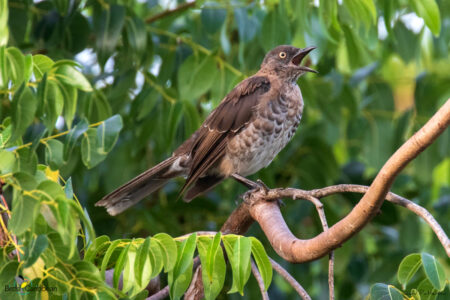
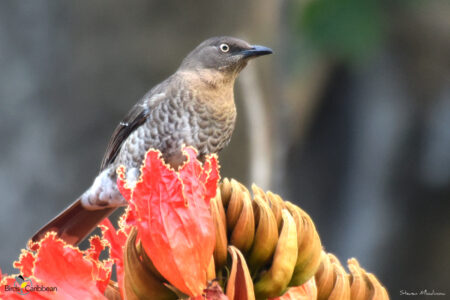
Activity of the Day
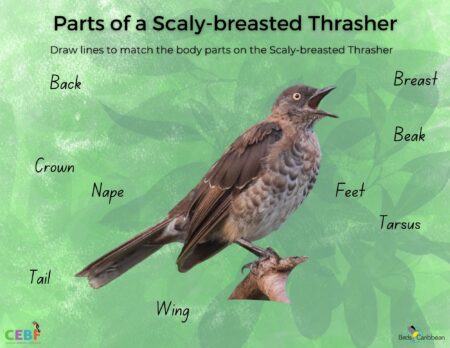 FOR KIDS: Do you know what the different parts of a bird are called? Knowing them can help you to learn how to describe and identify birds, as well as colour them in. Learn the names for the parts of a bird by checking out the diagram in this page.
FOR KIDS: Do you know what the different parts of a bird are called? Knowing them can help you to learn how to describe and identify birds, as well as colour them in. Learn the names for the parts of a bird by checking out the diagram in this page.
Then test your knowledge on today’s endemic bird by matching the correct names to the correct ‘parts of a Scaly-breasted Thrasher’ and completing this sheet.
Want to check your answers? You can see where all the words matched up to here.
FOR KIDS AND ADULTS: Enjoy this video of a Scaly-breasted Thrasher in the wild!
The Scaly-breasted Thrasher is endemic to much of the Lesser Antilles. If you want to find out more about the birds to be found across this group of islands we have good news for you, there is an amazing guide to birds of the Lesser Antilles now available! This field guide allows readers to easily identify all the birds they could possibly find, from Anguilla in the north of the chain down to Grenada in the south. Find out more here:

